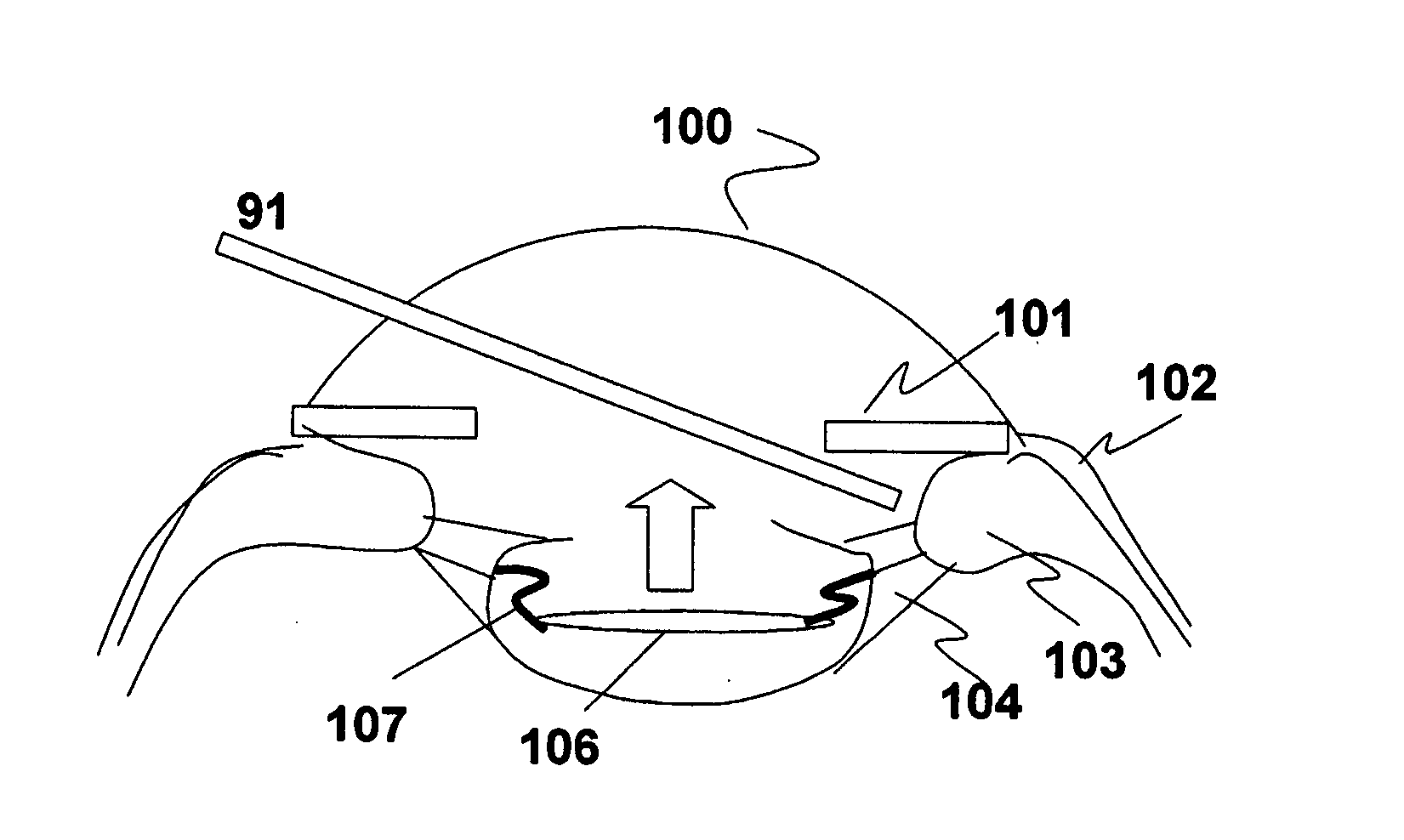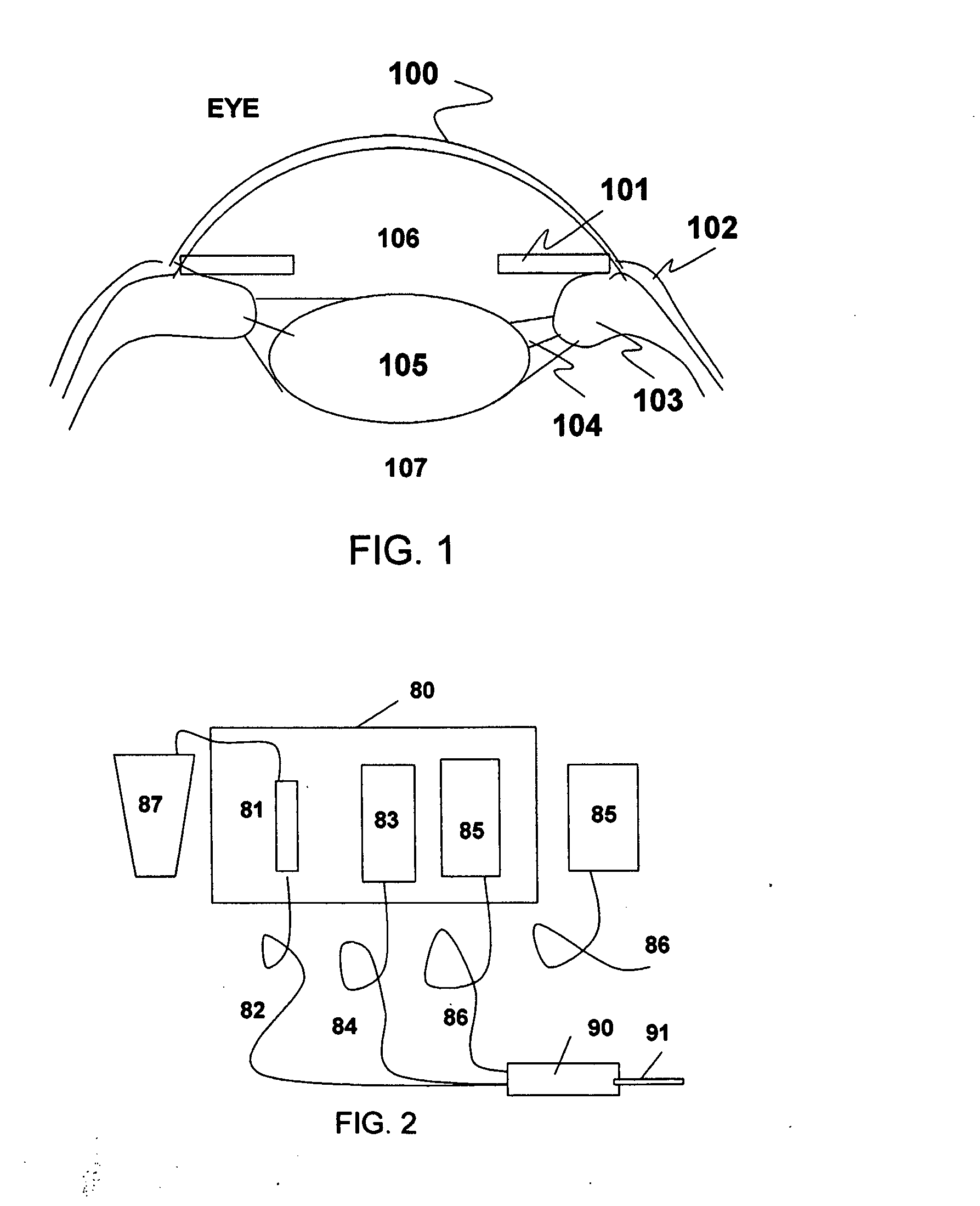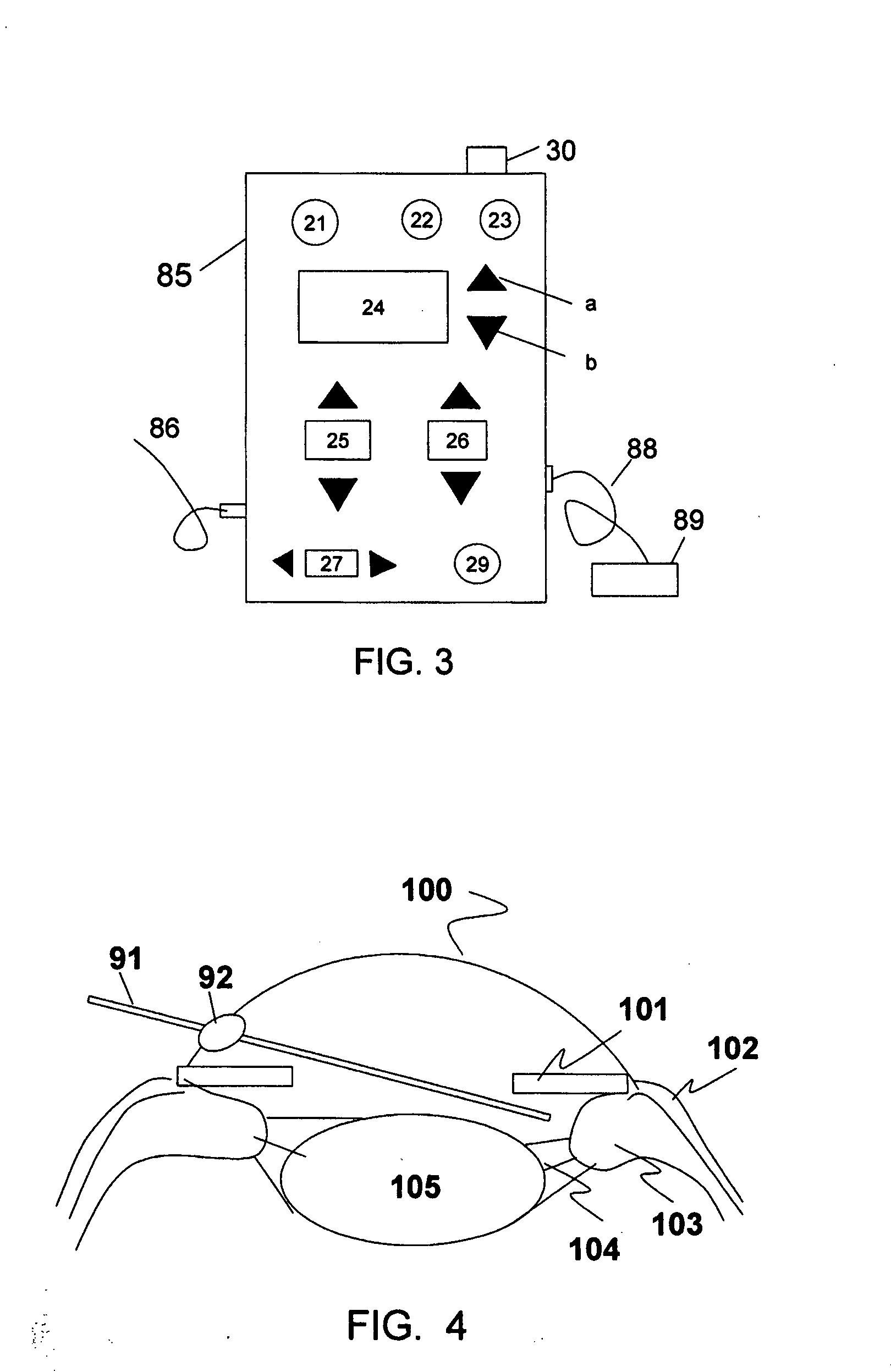Method and system for endoscope-assisted non-invasive laser treatment of presbyopia
a non-invasive, laser treatment technology, applied in the field of ophthalmic treatment, can solve the problems of inability to solve the intrinsic problems of presbyopia, the mechanical seb approach has the drawbacks of complexity, time-consuming, and major invasive, so as to enhance the accommodation of the treated eye, the effect of improving the accommodation
- Summary
- Abstract
- Description
- Claims
- Application Information
AI Technical Summary
Benefits of technology
Problems solved by technology
Method used
Image
Examples
embodiment — 1
Embodiment—1
[0042]One preferred embodiment is to use an endoscope device which allows a real time monitoring of the procedure to be described as follows. As show in FIG. 2, an endoscope-assisted laser system 80 consists of a camera 81 connected to a signal fiber 82, a white light generator 83 connected to an illumination fiber 84 and a laser device 85 connected to a laser fiber 86. These three fibers 82, 84, and 86 are guided to the treating area by an endoscope hand piece 90 having a gauge probe 91 with a diameter about 1.0 to 2.5 mm, which is commercially available and named as gauge No. 19 to 25. The above mentioned three fibers have a core diameter about 0.1 to 0.5 mm, such that all these three fibers can go through the hollow tube of the gauge probe 91. The camera 81 is further connected to a monitor 87 for a real time view of the surgery. The laser device 85 can be integrated inside the box of the endoscope 80 as shown by FIG. 2. It can also be a separate stand along device 85...
embodiment — 2
Embodiment—2
[0043]This invention proposes a prefer laser device 85 having the output laser beam to be highly transparent to the vitreous liquid of the eye, but strongly absorbed by the pigments of the treated soft tissue, the ciliary body (or process) 103. In addition, visible laser (0.4 to 0.69 nm) should be excluded to avoid potential retina damage. Therefore the preferred laser beam wavelength includes between about 0.7 microns to about 1.3 microns which has very weak absorption in the vitreous liquid. The preferred lasers include solid-state lasers such as Nd:YAG, Ti:sapphire laser having wavelength about (0.7-1.3) microns, or fiber lasers having wavelength about (1.0-1.3) micron, or diode (semiconductor) lasers having wavelength about (0.7-1.3) micron, with the most preferred wavelength about 780 to 980 nm. The preferred laser beam intensity profile includes a continuous-wave (cw) or a pulsed wave having a pulse duration of 1.0 ns to about 500 microseconds. The operation mode o...
embodiment — 3
Embodiment—3
[0044]FIG. 3 shows a schematic diagram of the control panel of the endoscope-assisted laser system, where the laser device 85 consists of a laser fiber 86 which is connected to the hand piece 90 and the gauge probe 91 as described in FIG. 2. It also includes an emergent switch 30 and a foot pedal 89 connected to the device by a wire 88, wherein the foot pedal is used to turn on and off the laser power by the surgeon.
[0045]The said laser device has a control panel having touch screen control bottoms including an aiming mode 21 (for the aiming red light power adjustment), a ready-mode 22 (for laser turn on and off), a standby mode 23 (for control parameters adjustment mode). It also includes a laser power indicator 24 and level adjustment up (a) and down (b); a laser on-duration indicator 25, a laser off-duration indicator 26; a laser illumination total period (time) indicator 27 (in seconds); and a save-mode 29 to save preset parameters for friendly use. The on-off durati...
PUM
 Login to View More
Login to View More Abstract
Description
Claims
Application Information
 Login to View More
Login to View More - R&D
- Intellectual Property
- Life Sciences
- Materials
- Tech Scout
- Unparalleled Data Quality
- Higher Quality Content
- 60% Fewer Hallucinations
Browse by: Latest US Patents, China's latest patents, Technical Efficacy Thesaurus, Application Domain, Technology Topic, Popular Technical Reports.
© 2025 PatSnap. All rights reserved.Legal|Privacy policy|Modern Slavery Act Transparency Statement|Sitemap|About US| Contact US: help@patsnap.com



